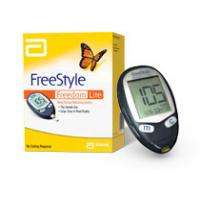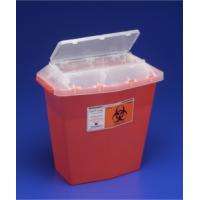
Needle Phobia in People With DiabetesNeedle Phobia in People With Diabetes
  © Satjawat Boontanataweepol | Dreamstime.com It’s hard to imagine a person who likes to be stuck by needles. In fact, most of the people would wish to avoid any procedure that involves sticking a needle into their body even if it’s for their own good, such as a vaccination or a regular blood test. Nevertheless, averting that unpleasant experience seem to be hardly possible. On average, healthy individuals can get way over hundred needle sticks over their lifetime. If you have to get through a hospital stay, that number can grow significantly. And if you have diabetes that requires treatment with insulin injections, the amount of needle sticks is hardly countable. Many diabetic patients live through this experience with just a minor discomfort. Some people, however, in addition to having to manage their blood sugar levels, have to endure another, even more difficult challenge – needle phobia. This condition affects about a quarter of American population and is defined as the fear of injections and transfusions. There are different types of needle phobia: trypanophobia (fear of injections), aichmophobia (fear of sharp, pointed objects), and belonephobia (fear of needles and pins). Symptoms of needle phobia vary quite significantly from one person to another and can include nausea, sweating, palpitations, dizziness, difficulty breezing, panic attacks, feeling physically or emotionally violent, fainting, insomnia, and high blood pressure. Needle phobia is most commonly triggered when a person is actually seeing the needle, so camouflaging or hiding it can often help to eradicate the phobia. One of the effective solutions is to use Pip lancets. The needle always stays hidden inside the ready-to-go, disposable device. – All you need to do is to remove the cap and press the Pip lancet into your finger. To make it comfortable for virtually every person, Pip lancets are available with needles in multiple lengths and gauges. There are other options that can be used if you suffer from needle phobia. One of them is Inject-Ease, a device designed to completely encase your insulin syringe. As with Pip lancets, you never see a needle. Just place your loaded insulin syringe into the Inject-Ease, position the tip against your skin, and press the button. The medicine will be automatically injected at the controlled rate, while the special tip of the device will improve your experience by reducing the sensation of pain during the injection. Another device that is engineered to simplify the injection process is named Autoject 2. This advanced auto-injector device can be used to deliver a variety of different syringe-based medications, while completely concealing a syringe and its needle. There is also a solution that can greatly reduce the number of times that you need to prick your finger in order to check your blood sugar levels. It’s called Continuous Glucose Monitoring (CGM). FDA-approved CGM devices, that are available for both adults and children, track your blood sugar levels 24 hours a day, automatically collecting readings every 5-15 minutes. A CGM sensor is adhered to the back of your arm or inserted under the skin in the belly area. The sensor wirelessly send the information to a portable monitor the size of a pager, which displays your blood sugar levels in selectable intervals. Is too high or too low sugar level is detected, the sensor sends an alarm for you to take measures. One more effective way to significantly reduce the number of insulin injections you have to take is to use an insulin pump – a cell phone-sized computerized device that functions similarly to the pancreas by continuously delivering small doses of short acting insulin into the blood stream based on a variety of factors.
| |||||||||||||||||||||||||




























